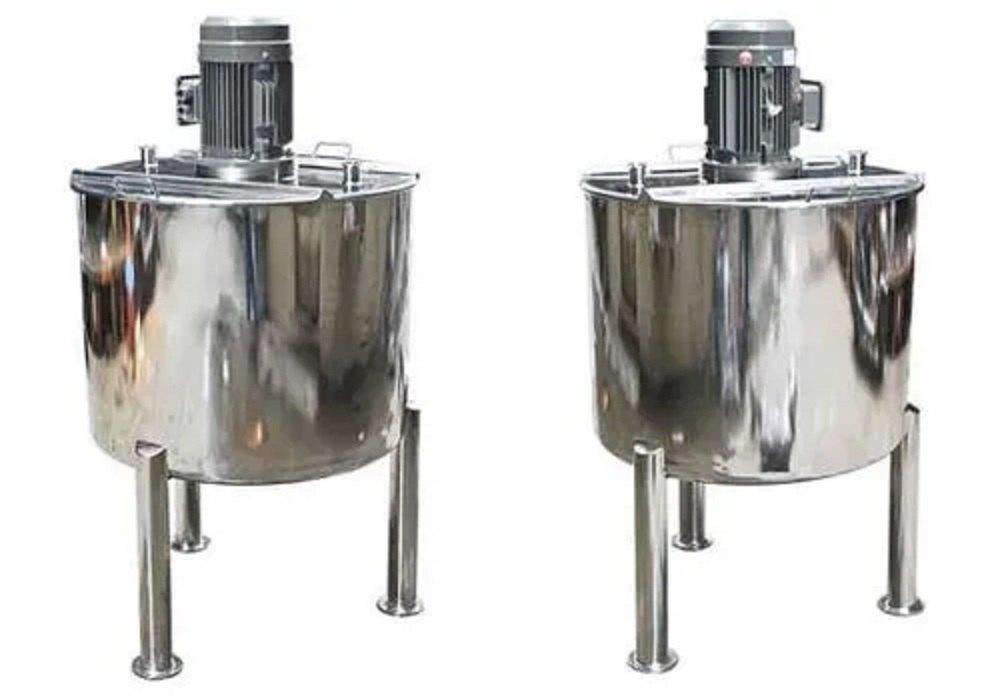Notifications

9 minutes, 29 seconds
-465 Views 0 Comments 0 Likes 0 Reviews

When it comes to industrial processes, mixing tanks play a critical role in ensuring consistency, efficiency, and the quality of the final product. Whether you’re working in food and beverage production, pharmaceuticals, chemicals, or cosmetics, selecting a high-quality mixing tank is paramount. However, with so many different types of tanks available, choosing the right one can be a daunting task. To help you make an informed decision, here are the top features to look for in a high-quality mixing tank.
The materials used in the construction of a mixing tank are fundamental to its performance and longevity. The best mixing tanks are made of materials that are resistant to corrosion, abrasion, and damage caused by harsh chemicals or extreme temperatures. Stainless steel is the most commonly used material due to its durability, rust resistance, and ease of cleaning. Stainless steel tanks are also non-reactive, which is crucial when mixing sensitive substances like food or pharmaceuticals. Other materials, such as carbon steel and high-density polyethylene (HDPE), may be suitable for specific applications, but they often lack the robustness and longevity of stainless steel.
One of the primary purposes of a mixing tank is to blend substances uniformly. The agitation system plays a key role in achieving this goal. A high-quality mixing tank should be equipped with a well-designed agitator that ensures thorough mixing of the materials inside the tank. The type of agitator you choose depends on the viscosity, temperature, and type of material being mixed.
For example, a paddle agitator may work well for liquids, while a high-shear agitator might be necessary for thicker or more viscous materials. The shape, speed, and configuration of the agitator blades will directly influence how efficiently the ingredients are mixed. Furthermore, it’s essential to ensure that the agitation system provides consistent flow patterns throughout the tank to avoid any dead spots where substances may not mix properly.
The size and capacity of the mixing tank are essential considerations depending on the scale of your operation. A small-scale operation may only require a tank with a few liters of capacity, while a large-scale industrial process might require tanks that can handle thousands of liters. It’s important to choose a mixing tank that suits the volume of product you plan to process without compromising on efficiency.
It’s also worth considering whether the mixing tank is designed for batch or continuous processing. Batch tanks are ideal for smaller quantities and can provide more control over the mixing process, whereas continuous tanks are better for large-scale operations that require a steady, uninterrupted flow of material.
High-quality mixing tanks should offer versatility, meaning they can handle a variety of materials and mixing processes. If your production needs change over time, you want a tank that can adapt to new processes, different substances, or varying mixing requirements. Look for a tank with adjustable agitators or one that can accommodate multiple mixing speeds to cater to different viscosity levels.
In some industries, it may be necessary to mix at varying temperatures or under different pressure conditions. A mixing tank that can withstand high or low temperatures and has pressure controls will provide more flexibility for various operations.
Controlling the temperature and pressure inside a mixing tank is vital for maintaining product quality and optimizing mixing performance. High-quality mixing tanks come equipped with advanced temperature control systems such as heating jackets or cooling coils that regulate the tank’s internal temperature. For example, in chemical or pharmaceutical processes, overheating or inadequate cooling could result in product degradation or inconsistencies in the final mixture.
Similarly, tanks designed to operate under pressure are crucial for processes that require sealed environments or for substances that could be volatile under normal atmospheric pressure. Mixing tanks with built-in pressure control features allow for more efficient mixing of gases or liquids and help maintain product integrity.
Hygiene is a crucial factor in industries like food and beverage production, pharmaceuticals, and cosmetics, where contamination can compromise the product quality. A high-quality mixing tank should be easy to clean and maintain to meet strict sanitary standards. Stainless steel tanks, for example, are often preferred because they can be cleaned effectively with minimal effort, reducing the risk of contamination.
Look for tanks with smooth, crevice-free surfaces that prevent the buildup of residues. Some advanced models even come with automated cleaning systems, such as CIP (Clean-in-Place) technology, to streamline the cleaning process and save time.
In many industrial settings, mixing tanks don’t work in isolation. They often need to be integrated with other equipment such as pumps, filters, conveyors, and storage tanks. A high-quality mixing tank should be designed for seamless integration into your existing production line. This could mean having the proper inlet and outlet connections for transferring materials in and out of the tank or ensuring that the tank’s controls are compatible with your plant’s automation systems.
Moreover, when choosing a mixing tank, consider how easily it can be upgraded or expanded as your business grows. Some tanks offer modular designs that allow for additional components or features to be added as needed.
Safety is always a top priority when operating industrial equipment, and mixing tanks are no exception. A high-quality mixing tank should come equipped with various safety features to ensure the well-being of operators and maintain operational efficiency. These features might include:
While it’s important to invest in a high-quality mixing tank, cost-effectiveness is another key factor to consider. A good mixing tank should deliver a balance between performance and cost. While high-end tanks may have more features, it’s essential to evaluate whether those features are truly necessary for your operation.
Energy efficiency is also critical. Look for tanks that use minimal energy to operate, especially when considering agitator power and temperature control. An energy-efficient mixing tank will not only help you save on utility bills but also reduce your overall environmental impact.
In conclusion, selecting a high-quality mixing tank is a crucial decision that impacts your production process, product quality, and overall operational efficiency. By considering factors such as durable construction materials, an effective agitation system, versatility, temperature and pressure control, ease of maintenance, and safety features, you can make an informed decision that will benefit your business in the long run. Always remember that investing in a top-notch mixing tank is an investment in your product’s quality and your company’s success.

